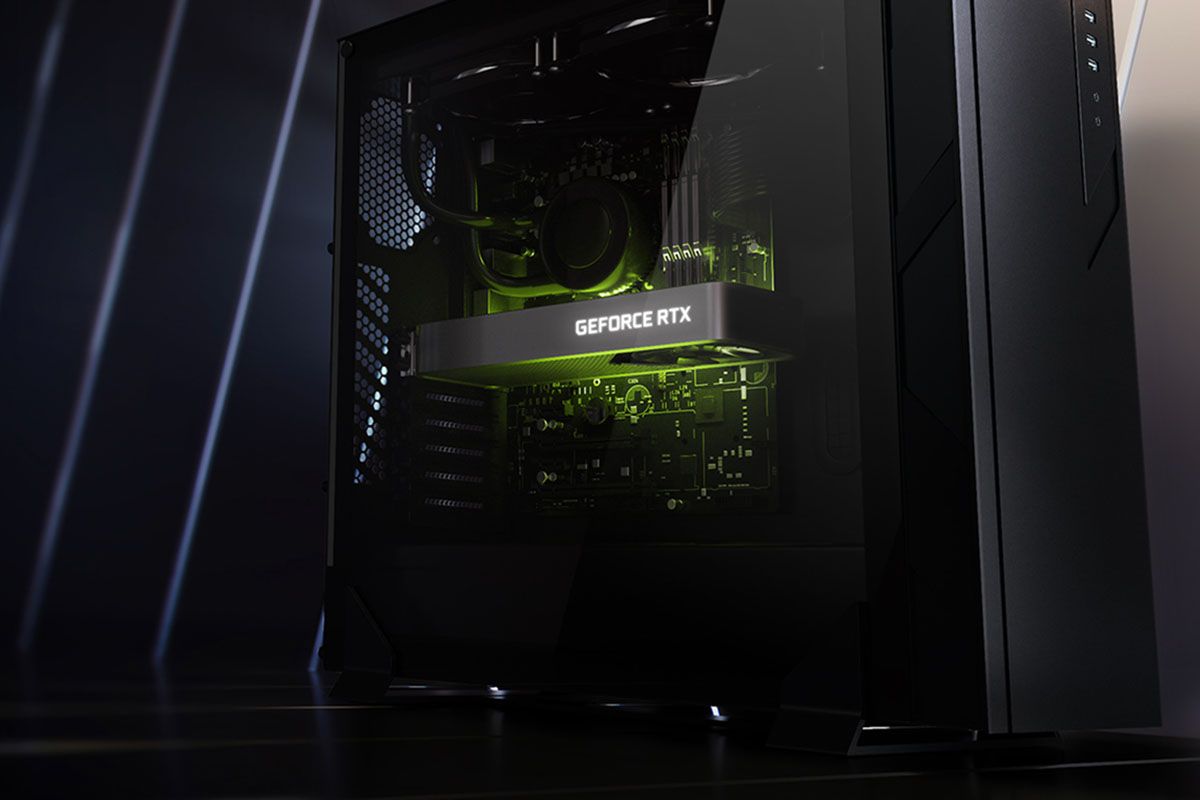
Best GPUs for under $300 in 2024
PC gamers looking to build or upgrade their rigs are in a tough spot right now, as graphics cards seem to be getting outdated faster and faster. On top of that, GPU makers are heavily focused on making cards for AI applications, leaving gamers in the lurch. That said, things are still much better now than during the crypto-mining boom of 2020-2021 when GPU prices skyrocketed. PC builders looking for the best GPU for under $300 have more than a few options today.
Although the market for entry-level and mid-range GPUs isn’t great right now, there are still plenty of solid sub-$300 graphics cards capable of delivering very good performance at 1080p and even 1440p. You’ll have to spend quite a bit more if you want a good 4K gaming GPU, but if $300 is your upper limit, we’ve got some budget-friendly graphics cards right here that give you the best bang for your buck.
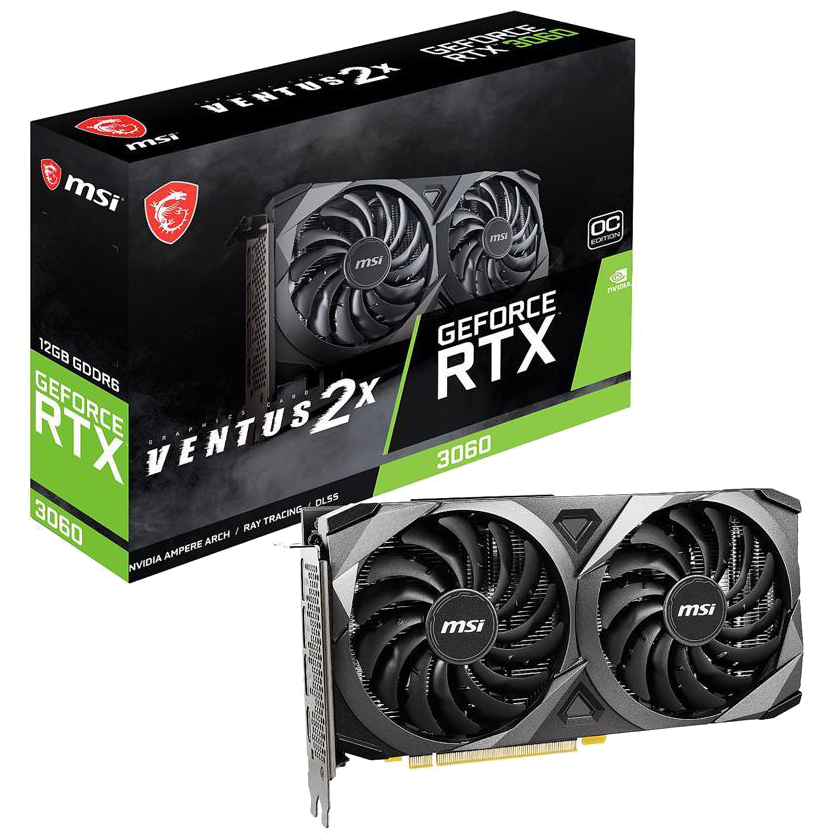
Source: MSI
MSI Ventus 2X GeForce RTX 3060 12GB
Best Overall
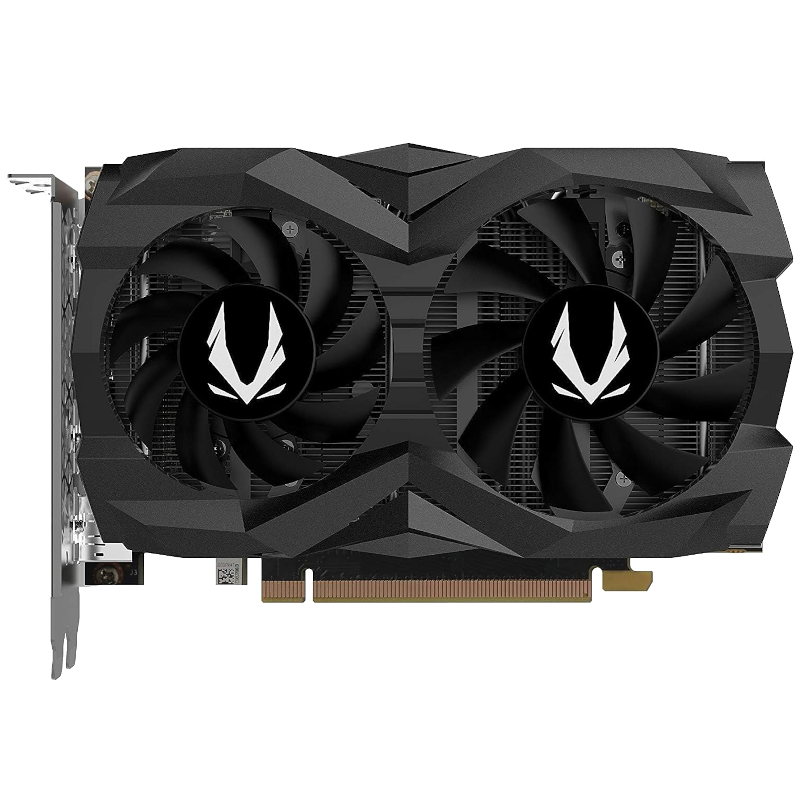
Source: ZOTAC
ZOTAC GeForce GTX 1660 Super GPU
Best Alternative
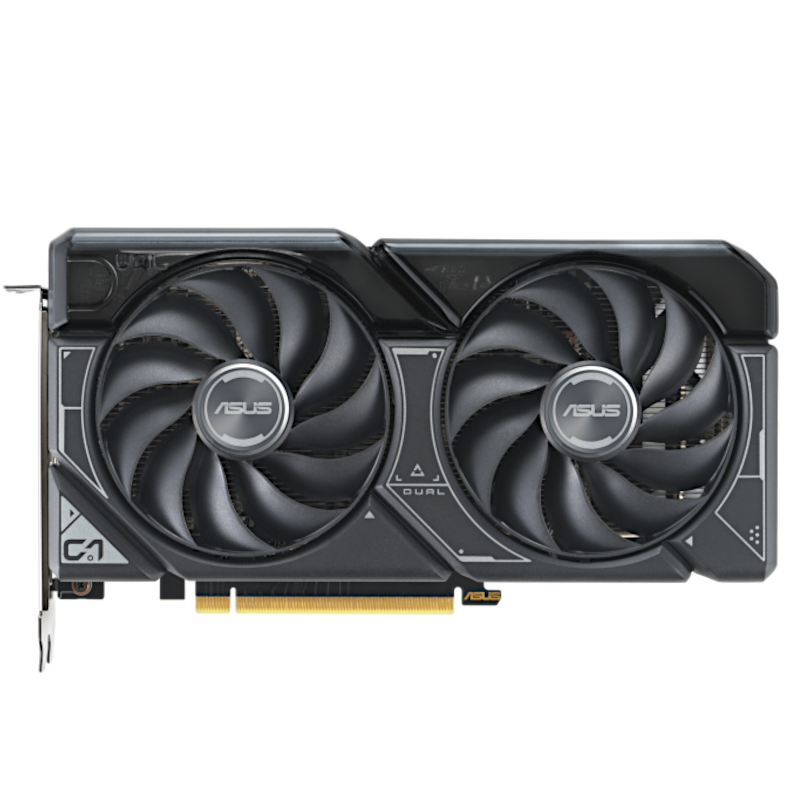
Source: Asus
Asus Dual GeForce RTX 4060
Premium pick
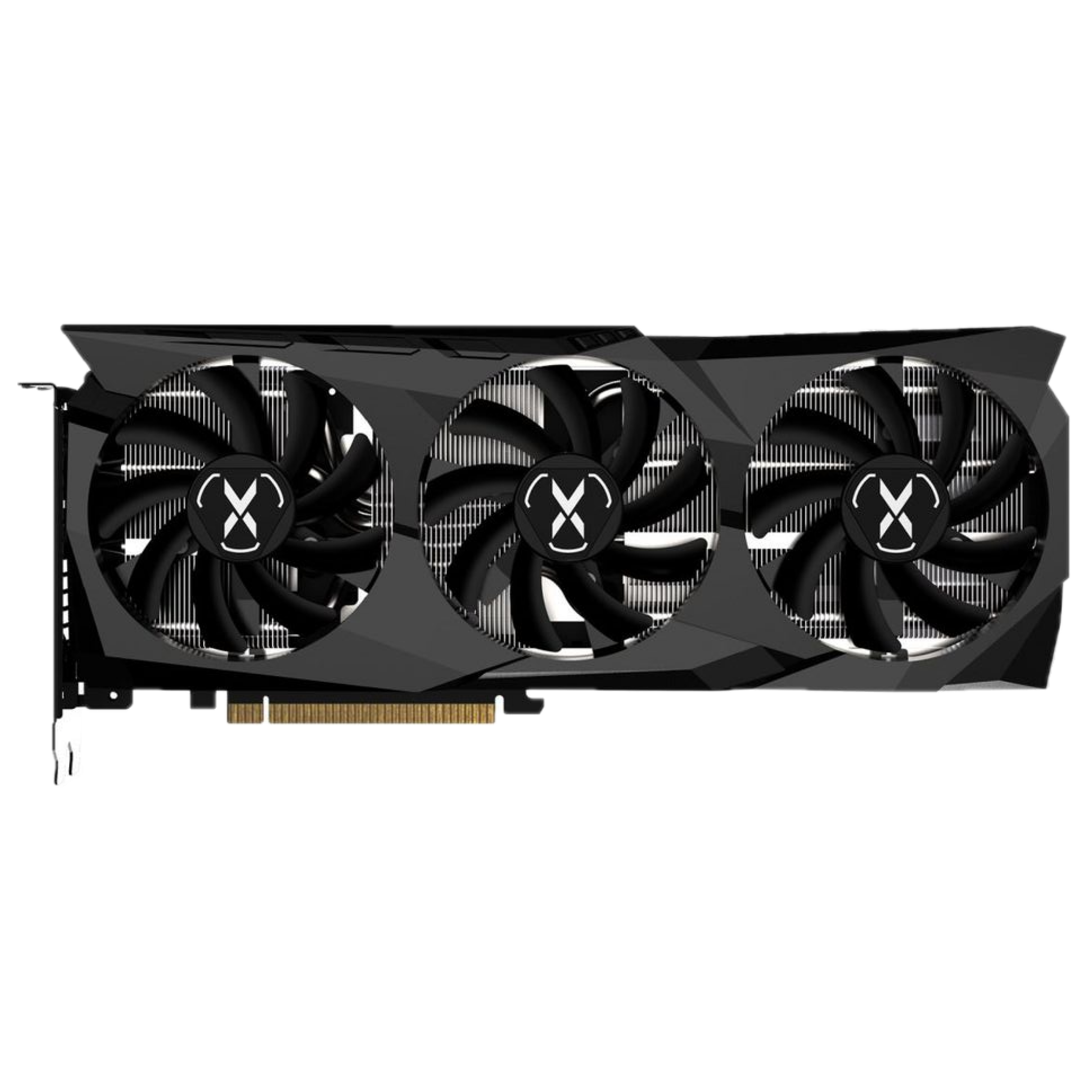
Source: XFX
AMD Radeon RX 6700
Best Radeon GPU
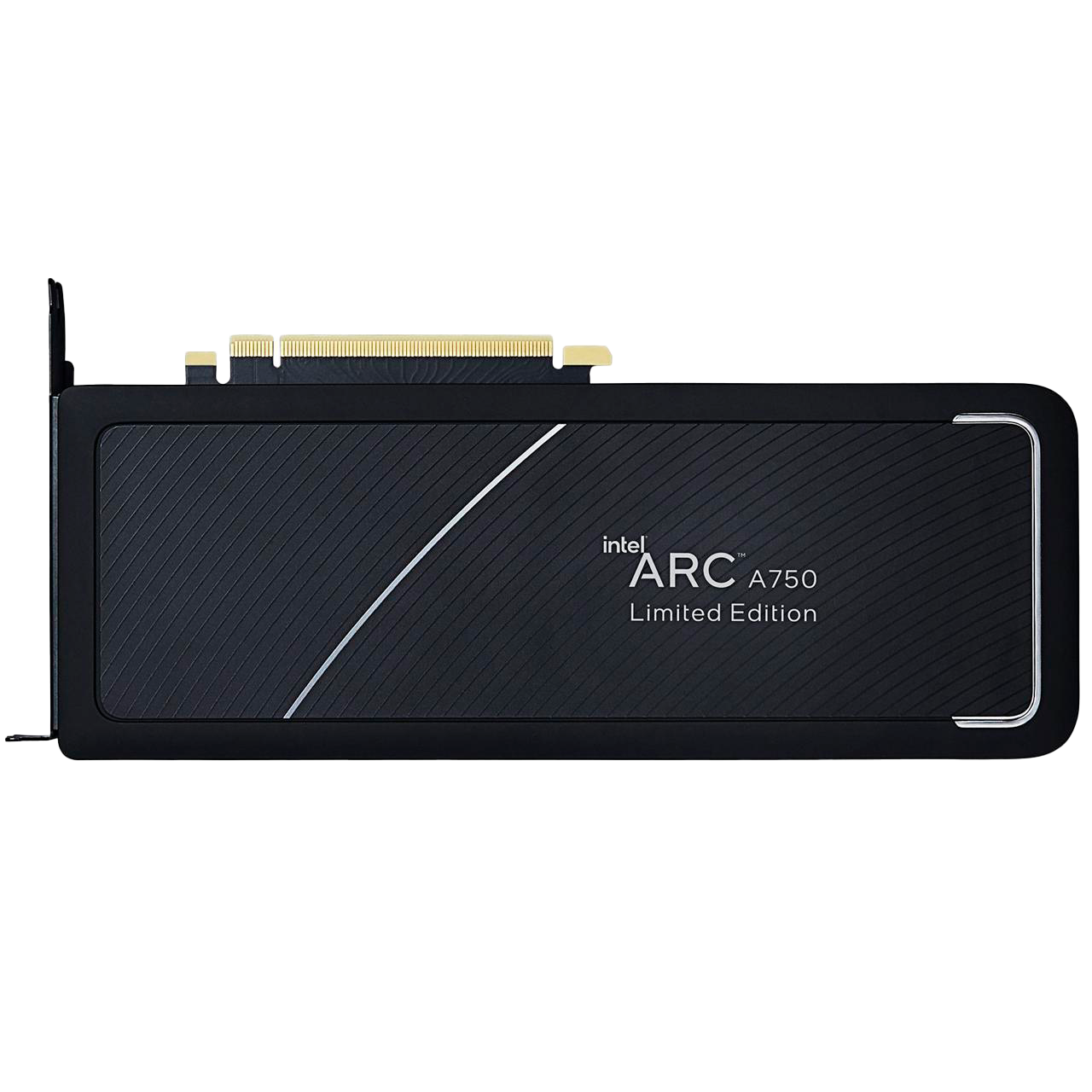
Intel Arc A750 Limited Edition
A New Contender
- See More

MSI Ventus 2X GeForce RTX 3060 12GB
Best Overall
The best choice for most gamers
The MSI Ventus 2X GeForce RTX 3060 is a cool, quiet, and capable GPU for 1080p and even 1440p gaming (although you may have to tweak the settings a bit to get a consistent 60 frames per second at 1440p). It has ample VRAM for handling modern games, along with ray-tracing support.
Pros
- Ample VRAM
- Solid ray-tracing support
- Space and energy efficient
Cons
- 1440p 60fps gaming may require lowered settings
- Rather basic design
Nvidia launched the GeForce RTX 3060 in early 2021, shortly after dropping the RTX 3060 Ti. Nvidia offered the RTX 3060 with a very attractive MSRP, but initially, it was hard to recommend considering inflated GPU prices. Now that the market has settled, the RTX 3060 is easier to recommend and our top pick for the best GPU for under $300. Other cards like the RTX 3060 Ti or the Radeon RX 6700 XT may outperform it, but you can usually expect to pay more for those.
The GeForce RTX 3060 boasts impressive specs for a mid-range GPU. It has 3,584 CUDA cores and 12GB of VRAM on a 192-bit hub, so it’s more than powerful enough for modern 1080p games. It can also handle 1440p for many titles, although you’ll likely have to adjust the settings to maintain a smooth 60fps. You can expect to spend more than $300 for a great GPU for 1440p gaming. Still, considering this card can be had for less than $300, the RTX 3060 is a great all-around GPU for most builders.

ZOTAC GeForce GTX 1660 Super GPU
Best Alternative
Affordable 1080p performance
The GeForce GTX 1660 Super is older than some of our other picks, but it’s still a great entry-level GPU for builders on a tighter budget. Although it doesn’t have ray-tracing support, it delivers good performance for 1080p games and can even handle 1440p with some titles.
Pros
- Still a good value
- Good 1080p performance
- Multiple display connections
Some seasoned gamers might be surprised to see a GTX 16-series card on this list. However, even today, the Nvidia GeForce GTX 1660 Super is still a solid value. There’s no denying that it’s longer in the tooth than many of our other picks, but for builders with relatively modest graphical needs, it’s a capable GPU that’s easy on the wallet. As a GTX series card, the 1660 Super doesn’t offer ray-tracing but delivers solid performance for its price.
The GTX 1660 Super has 6GB GDDR6 of VRAM and a base clock speed of 1,5GHz, which you can boost to 1,8GHz. It has enough muscle for playing today’s games in 1080p at good settings, and you can even push 1440p on some less demanding titles, assuming you have a Quad HD display for it. And speaking of your monitor setup, this GPU offers three DisplayPort 1.4 connections along with one HDMI 2.0 port, so you’ve got plenty of hookups for a multi-display setup if you want. If you’re looking for one of the best GPUs that comes in at well under $300 (even after taxes), the GTX 1660 Super is a great 1080p graphics card that will help you keep your overall build costs down while offering decent gaming horsepower.

Asus Dual GeForce RTX 4060
Premium pick
An upgrade if you can stretch your budget
The Nvidia GeForce RTX 4060 isn’t a major upgrade over last-gen cards, but it nonetheless outperforms the RTX 3060 (our top pick overall) if you’re willing to stretch your budget a little. It delivers solid performance for 1080p and 1440p gaming, with modern support for ray-tracing and DLSS 3. However, it’s a matter of debate whether its modest performance bump is worth the extra cost.
Pros
- Outperforms the RTX 3060
- Good ray-tracing and DLSS support
- Quiet and efficient design
Cons
- Could use more VRAM
- Not a huge step up from last-gen GPUs
The GeForce RTX 4060 series cards aren’t exactly overwhelming upgrades over the last-gen Nvidia GPUs, but if you’re looking to stretch your dollar right to that $300 limit, then the RTX 4060 is the card to buy right now. Although it features fewer cores and less VRAM than the RTX 3060, the GeForce RTX 4060 outperforms our top pick, if only by a modest margin. Nvidia claims that its improved ray-tracing and DLSS 3 support compensate for its pared-down specs, but only time will tell. Still, the RTX 4060 isn’t a bad buy at current prices, and it’s the strongest Nvidia card that falls within our limit.
What holds the RTX 4060 back from being our top pick is that it barely meets our budget requirements and will likely exceed it once you factor in tax. Also, it’s simply not a great value. Given its minor improvements over the RTX 30-series cards, the RTX 4060 is a harder sell compared to cards like the RTX 3060 Ti or the Radeon RX 6700 XT, both of which can be had for a little bit more (although neither currently meet our $300 price ceiling, which is why they’re not on this list).

AMD Radeon RX 6700
Best Radeon GPU
The best sub-$300 GPU for the AMD crowd
The Radeon RX 6700 is basically a cheaper and less powerful version of the acclaimed RX 6700 XT, offering around 80-90% of the performance at a more budget-friendly price point. It compares favorably to other mid-range cards like the GeForce RTX 3060 and Intel Arc A770, making it the best sub-$300 choice for builders who want an AMD GPU.
Pros
- Great value
- Outperforms similarly priced cards
- Quiet and efficient
If you’ve got your sights set on the best Radeon GPU for under $300 (maybe your gaming monitor only supports FreeSync, or perhaps you’ve just got a soft spot for AMD), then the RX 6700 is our recommendation. Its sibling, the acclaimed RX 6700 XT, might be the better buy overall, but you’re not likely to find a new one for less than $300. The Radeon RX 6700 nonetheless delivers about 80-90% of the capabilities of the RX 6700 XT and falls well within our price limit.
The Radeon RX 6700 has 10GB of GDDR6 VRAM and plenty of processing power for running 1080p games at high settings. Like our top pick, the RTX 3060, this GPU can also handle 1440p gaming, provided you’re willing to tinker with settings to achieve a smooth framerate. What holds the RX 6700 back from the top spot is its lackluster ray-tracing support, which lags noticeably behind the RTX 3060 and even lesser cards in some instances.

Intel Arc A750 Limited Edition
A New Contender
A viable alternative, with some caveats
Intel is a new challenger in the GPU game, and its first attempt at making a gaming graphics card is (mostly) a success. The Arc A750 is a solid 1080p GPU and an excellent value, comparing favorably to pricier cards like the RTX 3060. However, software compatibility is still a concern, with buggy drivers causing stability issues.
Pros
- Excellent value for 1080p gaming
- Compares favorably to pricier GPUs
- HDMI 2.1 and DisplayPort 2.0
- Ray-tracing support
Cons
- Compatibility is still an issue
Intel’s been in the CPU game for decades, but in 2022, this chipmaker threw its hat into the GPU ring with its Arc series graphics cards. It was an impressive entry: Intel’s mid-range GPU, the Arc A750, delivers solid performance for 1080p gaming, comparable to pricier cards like the Nvidia GeForce RTX 3060 and AMD’s Radeon RX 6600 XT. It’s a fantastic value, and you can regularly find it dipping below the $200 price point.
The Intel Arc A750 also supports ray-tracing, which is nice to see on a GPU that falls considerably under our $300 ceiling. It even has HDMI 2.1 and DisplayPort 2.0 for additional future-proofing. However, Intel’s foray into gaming graphics cards hasn’t been entirely smooth. The Arc series GPUs still suffer from irritating compatibility issues that affect in-game stability. It’s enough of a problem to hold the Arc A750 (and the A770, for that matter) back from being our top pick. Yet despite those setbacks, Intel’s cards still earn a well-deserved spot on our list of the best GPUs for under $300.
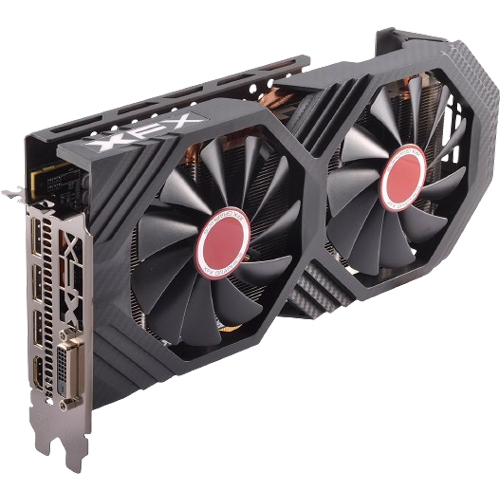
XFX Radeon RX 580
Best Cheap GPU
For cheap builds and modest needs
The pickings are slim for builders looking to spend less than $150 on a GPU without resorting to used and refurbished cards, but the Radeon RX 580 is still a viable (and cheap) option for 1080p gaming today. If you can live without recent innovations such as ray-tracing and have no interest in trying to game at 1440p, the RX 580 is a good budget gaming card for those with basic needs.
Pros
- It’s cheap
- Good 1080p performance
- 8GB VRAM
Cons
- No ray-tracing
- Forget 1440p gaming
The AMD Radeon RX 580 was released in 2018, and we’re not going to pretend it’s not relatively old in GPU years. However, if your gaming needs are modest, or you’re building a multi-use desktop PC with gaming as only a secondary concern, the RX 580 is still a good 1080p gaming GPU that’s quite cheap. It packs 8GB of GDDR5 VRAM, allowing it to handle AAA gaming suitably well, although newer games will likely require you to drop the settings a bit. It also doesn’t support newer features, such as ray-tracing.
If you don’t care about that sort of thing and just want a good, cheap GPU for playing games like Minecraft smoothly (and at higher framerates, which it’s still capable of doing), the RX 580 gets the job done without putting a major dent in your wallet. This isn’t close to being the best GPU you can get for under $300, considering that it comes in at less than half that, but we’d be remiss if we didn’t include this old standby for builders on an even stricter budget.
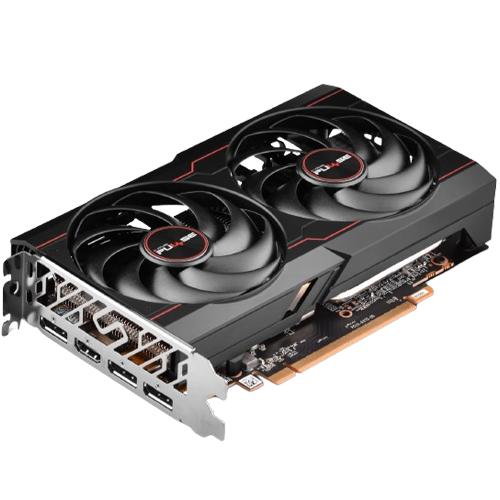
Sapphire Pulse AMD Radeon RX 6600 GPU
Best Compact GPU
A shorter card for tighter spaces
At 193mm, the Sapphire Pulse AMD Radeon RX 6600 is one of the shorter cards on our list, making it a good choice for builders working inside a smaller space. However, this isn’t just a solid dual-fan GPU, it’s a fine graphics card in its own right, holding its own against competitors like the GeForce RTX 3060.
Pros
- Compact, efficient form factor
- Great price-to-performance ratio
- Smooth performance for 1080p gaming
Cons
- Not ideal for 1440p
- Ray-tracing performance isn’t great
Space is always a concern when building a PC. Things like airflow and cable management are important considerations, not just to ensure the finished build looks clean, but it can also expel heat efficiently and keep the hardware running smoothly. That’s especially true if you’re working in a smaller case than your standard ATX mid-tower. The AMD Radeon RX 6600 is one of the best gaming GPUs for under $300, but this Sapphire Pulse model also features a more compact form factor.
We didn’t just choose the Sapphire Pulse AMD Radeon RX 6600 GPU because it’s relatively short (measuring 193mm in length overall). The RX 6600 is a solid contender for one of the best graphics cards for 1080p gaming, holding its own against our top pick, the GeForce RTX 3060. It’s a great value at around $200, bringing it comfortably below our $300 limit, and it can smoothly handle running modern titles in Full HD at high framerates. However, lackluster ray-tracing performance holds it back, and you shouldn’t expect to push things to 1440p. If you can afford to spend $300 and size isn’t an issue, then the Radeon RX 6700 is the superior choice. However, if space is a concern, and you’re happy with 1080p, the Sapphire Pulse AMD Radeon RX 6600 is tough to beat for the price.
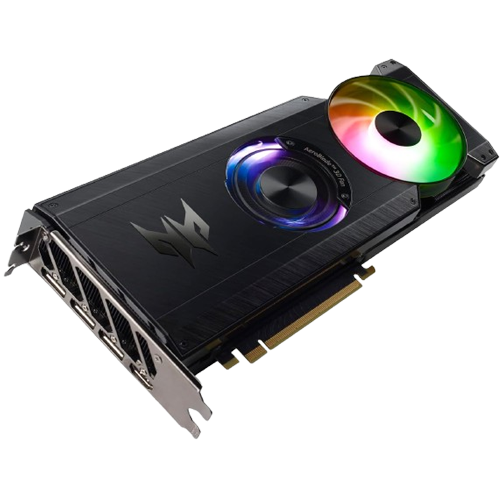
Acer Predator Bifrost Intel® Arc™ A770 OC
Best RGB GPU
Add some stylish LED flair to your build
Acer adds some LED flair to the Intel Arc A770 with its Predator Bifrost edition. However, its looks aside, this is still an excellent GPU for less than $300. It’s capable of 1440p gaming with a whopping 16GB of GDDR6 VRAM and supports both DisplayPort 2.0 and HDMI 2.1. Unfortunately, it’s held back by the same driver stability issues as the Arc A750.
Pros
- Sleek and attractive design
- Excellent value
- Can handle 1440p gaming
- 16GB VRAM
The Intel Arc A750 is a well-equipped GPU for the money, but its larger sibling, the Arc A770, is even more impressive. It features a whopping 16GB of GDDR6 VRAM, ray-tracing, and both DisplayPort 2.0 and HDMI 2.1 support, which many pricier cards don’t even have yet. It’s great for 1080p gaming and can even run many titles smoothly at 1440p, although it’s held back by the same software compatibility issues as the Arc A750. Hopefully, Intel will manage to iron out these wrinkles, but you can expect to deal with it in the meantime.
The Acer Predator Bifrost Arc A770 adds some gaming flair to the card’s original (and rather bland) design with two LED fans offering customized RGB lighting. If you’re building inside a case with a see-through side panel and want to show off some style, this is a great GPU for under $300 that will let you do it. We didn’t just choose this card for its style; even without LEDs, the Intel Arc A770 is a seriously impressive card, provided you’re willing to work around some driver-related hiccups.
Best GPUs for under $300 in 2023: The bottom line
Even if you’re on a budget and trying to keep the overall cost of your PC build within reasonable limits (say, less than $1,000), the GPU is still likely to be the most expensive part of the whole ordeal. However, you don’t have to pay out the nose to get a good GPU capable of 1080p at great settings for less than $300. Our overall pick, the Nvidia GeForce RTX 3060 with 12GB of VRAM, hits the sweet spot between price and performance. With 3,584 cores and 12GB of VRAM on a 192-bit bus, it compares very favorably to newer releases like the RTX 4060 and can handle today’s memory-hungry games.

MSI Ventus 2X GeForce RTX 3060 12GB
Editor’s Choice
The best choice for most gamers
Most gamers looking for the best GPU for under $300 will find that the GeForce RTX 3060 12GB card offers the most bang for their buck. It has ample VRAM for running modern games at 1080p with high framerates and can even be pushed to 1440p with adjusted settings.
If you don’t care about recent innovations such as ray-tracing and just want a solid and affordable GPU for 1080p gaming, we think the Nvidia GeForce GTX 1660 Super is a good choice for the money (provided you don’t overpay for it). If, on the other hand, you want to spring for one of Nvidia’s newer ray-tracing-capable cards, then the GeForce RTX 4060 can be had for around $300 or less. However, at this price, you should consider looking at AMD’s offerings, namely the Radeon RX 6700 (or even the Radeon RX 6700 XT if you can find it for under $300). The RX 6700 XT was a contender for this list, but as its street price still hovers north of $300, it didn’t quite make the cut.


